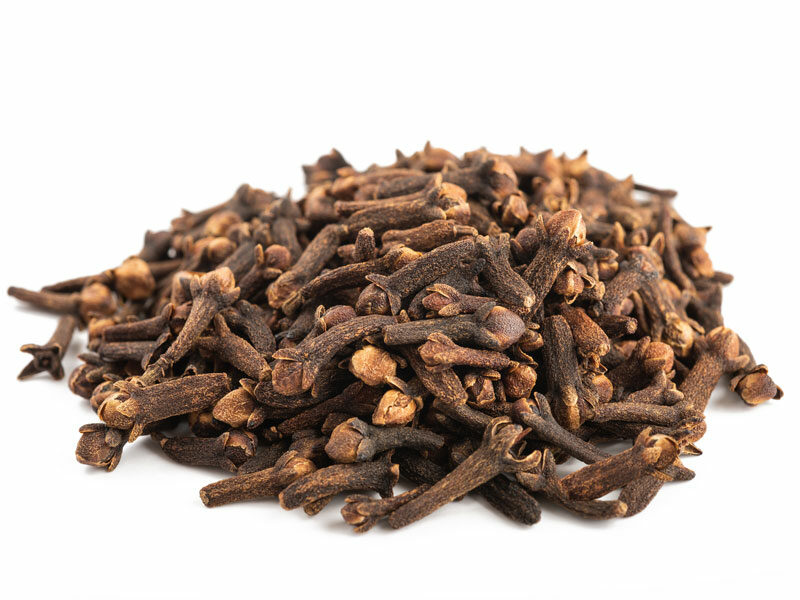Clove, spice (Syzygium aromaticum)

The evergreen clove tree originally comes from the Moluccas, a group of islands in the Pacific. Nowadays, the tree from the myrtle family, which grows up to 20 metres high, is cultivated in many tropical countries.
Even in ancient times, the aromatic, fragrant dried flower buds, the “cloves”, were highly sought after. The buds, which look like small nails, taste slightly sweet and burn sharply on the tongue. They contain large quantities of essential oil, 80 – 95 % of which consists of the substance eugenol. While cloves are used to flavour fish and meat dishes, red cabbage and at Christmas time in gingerbread or mulled wine, clove oil is obtained by distillation from the dried buds.
In folk medicine, it is used for its germicidal and analgesic effect on inflammation of the mucous membranes in the oral cavity and toothache. In addition, clove oil has proved its worth in aiding digestion, flatulence and gastritis. Because of its analgesic, circulatory and antispasmodic properties, clove oil is also used in balms for rubbing in. Recently, the high cell-protective potential of clove oil has attracted particular interest.